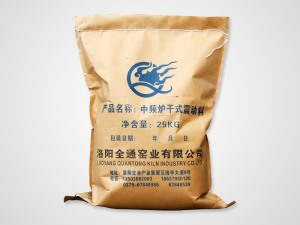How to properly maintain the furnace lining
1. Corrosion at the bottom of the furnace
In the normal use of the furnace lining, the thickness of the furnace lining and the thickness of the furnace bottom will gradually become thinner due to the circulation erosion and corrosion of molten iron in the long-term use. The intuitive situation is the increase of the furnace capacity. Generally, the furnace lining is corroded by 30- At -50%, it will be destroyed from scratch, and then a new furnace will be built.
From the analysis of the whole furnace lining, the place where the erosion is obvious is the slope position where the furnace bottom and the furnace lining are combined. Generally, after a long-term use of the furnace, the thick furnace lining at the slope part has been eroded to the same extent as the furnace lining. It is almost on an arc surface with the furnace lining, and even the soil where the bottom material and the furnace lining are combined shows a slight depression. With the increase of the furnace age, the depression in this position becomes deeper and deeper, If it is getting closer to the electric furnace coil and affects the safety of the application, it is necessary to re-build the furnace. The reasons for the depression of the furnace lining are not only due to the density of the quartz sand when the furnace is built, but also related to the chemical corrosion during the melting of the charging material in our use. and mechanical corrosion during operation.
2, the integrity of the furnace lining
The integrity of the furnace lining refers to the iron infiltration and cracks that often appear in the furnace lining. In our production, there are often weekend breaks and shutdowns. When the electric furnace is emptied and stopped melting, the furnace lining will gradually cool down. The sintered furnace lining is a brittle material, so the sintered layer will inevitably show cracks under the effect of thermal expansion and cold contraction.
In terms of protecting the furnace lining, the finer and denser the cracks are and the distribution is uniform, because only in this way can the cracks be bridged to the limit during the cold start, and the furnace lining can be restored to a good sintering level. In order to minimize the crack propagation, we In production, attention should be paid to: to avoid slag sticking to the lining material, the influence of excessive temperature on the lining material, the cooling of the lining material, and the surface inspection of the lining material is often carried out.

Related Industry Knowledge
- Features and Benefits of Coil Clay
- What are the advantages of a good furnace lining
- Misunderstandings in the use of ramming materials in intermediate frequency furnaces
- Phenomenon analysis of failure of argon blowing of ladle permeable bricks and how to improve the rate of argon blowing
- Where is the consumption reduction and energy saving of breathable bricks reflected?
- How to improve the service life of intermediate frequency furnace lining
- Reasons for damage to intermediate frequency furnace lining and how to solve them
- The performance and advantages of breathable brick
- Analysis of Structural Characteristics of Dispersive Breathable Bricks
- The intermediate frequency furnace charge knotting process needs to pay attention to details sharing
- When the ramming material of the intermediate frequency furnace is in use, the molten steel has viscosity slag, how to solve it?
- Discussion on the Influence of Furnace Lining Material on the Production of Electric Casting Furnace
- The age of the ramming material in the intermediate frequency furnace is related to those factors
- What are the advantages and disadvantages of refractory ramming material?
- What are the characteristics of the application of refractory bricks
- Teach you how to improve the temperature resistance of the intermediate frequency furnace lining
- What are the types of ladle breathable bricks?
- Main components of refractory materials such as breathable bricks, nozzle block bricks, castables, etc.
- What should I do if there are cracks in the ramming material of the intermediate frequency furnace?
- What is the function of ladle blowing argon stirring?


